Full South India Circuit
29 Nights
begins in Tamil Nadu and ends on the edge of a beach in Goa. If this circuit is somewhat ambitious, it is nonetheless doable and can be widely adapted or serve as inspiration to concoct your own trip according to your desires.
Your itinerary:
Day 1: Chennai International Airport – Chennai
“Namaskar!” Welcome to India in Chennai, the bustling capital of Tamil Nadu, known for its Marina Beach, the longest urban beach in the country. You are transferred to your hotel. Depending on the time of your arrival, visits to the city can be scheduled. Night on site.
Day 2: Chennai – Mahabalipuram
After breakfast, you will drive along the Coromandel coast and reach the fishing village of Mahabalipuram. Along the way, you will make a very instructive stop at the Dakshinachitra museum. Built in the form of a village, it showcases the different habitats of the four states of southern India and also offers live shows. You will soon have arrived at Mahabalipuram which houses an archaeological site of prime importance, a legacy of the Pallavas dynasty. In the afternoon, you will discover most of the temples and sculptures of the site, listed as UNESCO heritage. Among them are: the shore temple, dedicated to the god Shiva, and known to be the oldest Hindu temple in South India, the Pancha Pandava Rathas — monolithic temples in the shape of procession chariots —, the asceticism of Arjuna — splendid and gigantic open-air bas-relief — the Krishna Mandapam , an excavated temple, recounting the legendary facts of Krishna and finally the natural rock, perched on top of a hill, commonly referred to as “Krishna’s Butter Ball”. Night on site.
Day 3: Mahabalipuram
Early risers will mingle with the crowd present on the beach for the return from fishing. The mild temperatures in the morning will invite some to swim. If the weather conditions allow it, we will offer you a sea trip from a nearby village. You will have lunch with the locals, in a family of fishermen, with seafood and/or fish on the menu. A village of stonemasons since time immemorial, Mahabalipuram and its surroundings are home to many workshops where you can discover the work carried out on huge pieces. At the end of the afternoon, you will visit an evening school where the children do their homework. Good humor guaranteed! Every year, between December 24 and January 23, the city is very animated on the occasion of the Indian dance festival, which begins every evening at nightfall, around 6 p.m. and ends around 8 p.m. Night on site.
Day 4: Mahabalipuram – Pondicherry
Departure today, after breakfast, for the former French trading post in Pondicherry. The road runs through rice fields, salt marshes, cashew tree orchards or casuarina forests. You will arrive in old Pondicherry at the end of the morning. After lunch, you will relive, during a walk, the highlights of the city’s rich colonial past. The calm of its old French quarter, the friendliness of its Tamil city, its human size, where everything can be done on foot or by bicycle and finally its seafront where the population likes to meet after dark give Pondicherry a unique charm in India. Night on site.
Day 5: Pondicherry
You start the day with a stroll through the colorful alleys of the Goubert market, Pondicherry’s unmissable covered market, in the company of your Indian cooking teacher. You will leave with, in your basket, enough to prepare a delicious Tamil meal, and you will be ready to go to the kitchen! After the meal, ladies can try on a sari, while gentlemen prepare tea. In the afternoon, you will continue your discovery of the city with in particular the ashram of Sri Aurobindo where you will witness the deep meditation of the devotees, present around the tomb of The Mother, then nearby the Manakula Vinayagar temple, dedicated to the beloved Ganesh, the elephant god. How about settling in a dark room, another way to meet this South Indian culture, with its dances and music quite different from North India. Very prolific, the local cinema industry is called Kollywood and also produces real stars. Night on site.
Day 6: Pondicherry – Thanjavur
Early breakfast. You will mark a first stop in Chidambaram to visit the powerful temple of Nataraja, the cosmic dancer, whose dances punctuate the cycles of creation and destruction of the universes. You will participate in poojas – Hindu rituals, it will be a magical experience! You will then continue towards the ancient Chola capital of Gangaikondacholapuram. Its temple presents remarkable sculptures in a verdant setting of perfectly manicured lawns. You will be struck by the massive appearance of his Nandi, the mount of Shiva, majestically enthroned in front of the entrance to the sanctuary. Typical local lunch, served in the traditional way, on a banana leaf in a nearby restaurant. You will continue through rice fields and coconut groves to reach the site of Darasuram, listed as a UNESCO World Heritage Site. Finally, you will reach the fertile valley of the Cauvery, which thanks to its irrigation canals is called “the rice bowl” of India. Overnight in Thanjavur.
Day 7: Thanjavur – Chettinad
After breakfast, you will begin your journey with the discovery of the majestic Big temple. You may have had the privilege of attending the so-called “Nandi Palabishegam” ceremony the day before, before sunset, which takes place only during holidays. It is said that during this ceremony, if you confide your wishes to the ears of Nandi, then he will transmit them to Shiva, who will grant them! You will continue with the palace of Tanjore, which was the residence of the last rajas of Tanjore, including after the annexation of the city by the British. Finally you will not miss the Art Gallerywhich has a collection of exceptional bronzes, heritage of the Chola dynasty. You will leave for Chettinadu in the early afternoon. The region is known for its cashew plantations and you may then take a break on the side of the road, in front of a family stall that offers roasted nuts. Arrival around 5 p.m. Night on site.
Day 8: Chettinad – Madurai
Before departing for Madurai, you will stop over at Athangudi, where you will visit artisanal tile-making workshops. Formerly produced in terracotta, they contribute to the beauty of the region’s palatial residences. You will then take the direction of Madurai and on the way will visit a typical local market – kadaiin Tamil — offering colorful scenes of life. Lunch on the road, the opportunity to appreciate the cuisine specific to this region, very famous in Tamil Nadu. You will arrive in the middle of the afternoon in the cultural capital of Tamil Nadu. You will visit Thirumalai Nayak Palace, a royal residence, built in the 17th century, an architectural blend of Dravidian and Rajput styles. In the evening you will go to the temple of Meenakshi, which is undoubtedly one of the most fascinating in the south of the country. Gigantic, it houses nearly 33,000 sculptures. Unlike most southern temples, it is not dedicated to Shiva but to his companion, Meenakshi, avatar of the goddess Parvati. Religious fervor there reaches its climax during the Chithirai Thiruvizha festival, which takes place around the month of April, and which comes to celebrate, For 30 days, the celestial marriage of the goddess Meenakshi and the god Sundareswarar, avatar of Shiva. Alagar, avatar of Vishnu and older brother of Parvati, is also at the party since the last fifteen days of the festival are dedicated to him. Night on site.
Day 9: Madurai – Munnar
It’s a festival of colors and scents that will be offered to you during a morning walk in the alleys of the city’s flower market. You will continue with the visit of the museum dedicated to Gandhi, the liberator of India. Then you will take the road to Kerala, direction Munnar. You will make many stops along the way, notably at a brickyard where you will have the opportunity to stretch your muscles by helping the workers on site! This assembly station was so named because it is located at the confluence of 3 rivers (Kundaly, Madurapuzha and Nallathanni), Munnar meaning 3 rivers in Malayalam. The youngest and the oldest can visit the elephants before sunset. Night on site.
Day 10: Munnar
Early departure for a pleasant guided hike. You will walk in the heart of tea, coffee, cardamom and black pepper plantations and you will enjoy breathtaking panoramic views. The program will be adapted according to your taste for hiking and your physical conditions. If there is time, the day can end with a visit to a tea factory. Night on site.
Day 11: Munnar – Mararikulam
Today you will head towards the Malabar coast and its beaches fringed with coconut palms. Mararikulam offers an ideal setting to enjoy the pleasures of the beach. You will arrive in the early afternoon. Night on site.
Day 12: Mararikulam
Marari beach offers a heavenly setting for a well-deserved moment of idleness. Around 4 p.m., you will head to Alleppey to savor the benefits of an Ayurvedic massage in one of the best clinics in town. Finally, you will end the day with a typical local dinner at the inhabitant’s, which will be followed by a show of Kalaripayattu, the oldest form of martial art in the world, originating in South India.
Day 13: Mararikulam – Alleppey
This is the long-awaited day when you will reach Alleppey, sometimes nicknamed “the Venice of India”. It is a very popular destination in Kerala, known for its enchanting scenery made up of a myriad of canals and lagoons. At the end of the morning, you will board a private barge for a trip on Lake Vembanadu, the largest lake in Kerala and will cross fabulous landscapes of savannahs and coconut groves. This day will be memorable! Night and meal on board the House boat .
Day 14: Alleppey – Fort Cochin
Direction Fort Cochin, a former stronghold on the Malabar Coast, which was successively under Portuguese, Dutch and then British domination. These different influences have shaped the city to give it its unique character. At the start of the afternoon, you will notably discover the Dutch palace, the old Jewish quarter with its synagogue and its antique shops or the unmissable laundry district, the Dhobi Wallah . In the evening, you will be invited to a Kathakali dance performance. Don’t miss the make-up session that precedes it! Night on site.
Day 15: Fort Cochin – Mysore
Wake up early to observe the spectacle of the famous Chinese fishing nets stretching along the beach. The whole day is available to you to stroll through the narrow streets of the historic city, and enjoy its extraordinary tranquility. In the early evening you board a night train which will take you to the state of Karnataka, to Mysore. You arrive in the early morning in the heart of the city, famous for its sumptuous palace.
Day 16: Mysore
After resting at the hotel in the morning, in the early afternoon you will visit the second major attraction in India after the Taj Mahal: the extravagant palace of the Maharaja, a kitsch pastry, ephemerally illuminated by tens of thousands of light bulbs every evening — 5 minutes only on weekdays, 30 minutes on Sundays — from 7.45 p.m. Then you will probably not resist the idea of strolling through one of the most colorful markets in South India, the Devaraja Market , with its many local artisanal products, made from sandalwood. Night at the hotel.
Day 17: Mysore
The cultural capital of Karnataka is also known for its many Yoga schools and you can benefit, in the morning, from an initiation if you wish, to this physical and spiritual discipline, present at the heart of Hinduism. The day could be devoted to visiting the surroundings of Mysore, including the fortress of Srirangapatna, built in the 18th century by Sultan Tipu, in particular for its superb murals in the Summer Palace, as well as that of the Chennakesava temple in Somnathpur, located in a green setting on the banks of the Kaveri, for its splendid sculpted decorations. Finally, in the evening, on the heights of Chamundi Hills , you can attend rituals in honor of the local deity Chamundeshwari, avatar of the goddess Durga. Night at the hotel.
Day 18: Mysore – Madikeri area
Today, direction the region of Coorg or Madikeri, sometimes proudly displaying itself as “the Scotland of India”. It is crossed by the western ghats, this long chain of mountains which runs vertically along the west coast of India from southern Gujarat to western Tamil Nadu. You will stop along the way at the Bylakuppe Tibetan Refugee Camp, established in the early 1960s, and visit Namdroling Monastery. Second stop planned for the beginning of the afternoon at Madikeri, a mountain resort nestled in the middle of coffee plantations. In particular, you can admire the magnificent panoramic view offered from the gardens of Raja’s seat . Then continue on the road to reach your hotel.
Day 19: Madikeri region
Morning departure for hiking lovers, you will leave today to climb the peak of Tadiandamol culminating at 1748 meters. It is an exceptional and generous nature that offers itself to you during this climb, punctuated by a stop known as Big rock . Lunch at the summit, which can be covered by small clouds. Descent and return to your hotel for a well-deserved snack!
Day 20: Madikeri – Hassan area
Today, you only take the road at the end of the morning. It will be possible to stop again at Madikeri for lunch and to visit its fort. You finally continue in the direction of Hassan, the ideal base for leaving the next day to discover the sites of Belur and Halebid. Installation at the hotel.
Day 21: Hassan – Belur – Halebid – Davanagere
You are going today to meet the kingdom of the Hoysalas, which, very prolific, covered the region with temples between the 11th and 13th centuries. Their artistic and architectural activity made their reign one of the greatest moments in the civilization of South India. You will admire the delicacy of their sculptures by visiting in particular the temple of Chennakeshava, located in Belur or the temple of Hoysaleshwara, located in Halebid. Lunch in the surroundings and continuation towards Davanagere, your halfway stop towards Hampi.
Day 22: Davanagere – Hampi
You continue your journey on the Deccan plateau to reach Hampi, the capital of the last Hindu empire known to medieval India, the kingdom of Vijayanagar. Located on the edge of the Yamini Hills , Hampi offers a fabulous landscape made of ocher-colored granite hills, with rounded shapes, which exudes an atmosphere of softness and serenity. Place of pilgrimage, the city and its surroundings are home to several hundred places of worship. You will arrive in the early afternoon. Night on site.
Day 23: Hampi
This day is devoted to the discovery of the main remains of the ancient city. Why not join them by bike or moped and thus take full advantage of the charm of the place? To the north the sacred city with in particular the temple of Virupaksha, and to the south the royal city, with the famous elephant stables. To the northwest, beyond the Tungabhadra River, the village of Anegondi with its Hanuman and Durga temples is worth a visit. Night on site.
Day 24: Hampi – Badami
You continue your journey on the Deccan plateau, whose drought contrasts with the tropical sweetness of the South. You arrive at Badami, former capital of the Chalukya dynasty, who were the contemporaries and rivals of the Pallavas, whose magnificent sculptures you have been able to observe at Mahabalipuram . In the afternoon, you set off to climb the hills leading to the excavated caves and discover real gems. From here you enjoy a sunset with an unforgettable view of Lake Agastya. Night at the hotel.
Day 25: Badami – Pattadakal – Aihole – Badami
Like Badami, Aihole is home to some of the oldest temples of the Chalukyas, in the form of caves, but also testifies to a second architectural phase, which would have laid the foundations of the architecture specific to Indian temples. The sanctuaries consecrate the three religious currents: Hinduism, Jainism and Buddhism. Finally, the site of Pattadakal, whose constructions date back to the 8th century, marks the culmination of the architectural know-how of the Chalukyas. Night in Badami.
Day 26: Badami – Chorla Ghat
Your trip to South India is coming to an end. Before reaching Goa, you stop at some 800 meters above sea level, in lush greenery, a natural area whose biodiversity is protected.
Day 27: Chorla Ghat
Today you can hike in the surroundings if you wish and witness the beauty of the fauna and flora of this little paradise.
Day 28: Chorla Ghat – Goa
Last stage of your stay, the state of Goa, known for its magnificent beaches. Installation at the hotel by the sea at the end of the morning. You take full advantage of the beautiful stretches of fine sand. Night on site.
Day 29: Goa
Today swimming and idleness and/or visit of the former Portuguese colony, with in particular the churches of old Goa but also the hinterland and its beautiful Indo-Portuguese residences.
Day 30: Dabolim airport transfer, Goa
You can still make the most of these last moments at the water’s edge before your transfer to Goa International Airport.

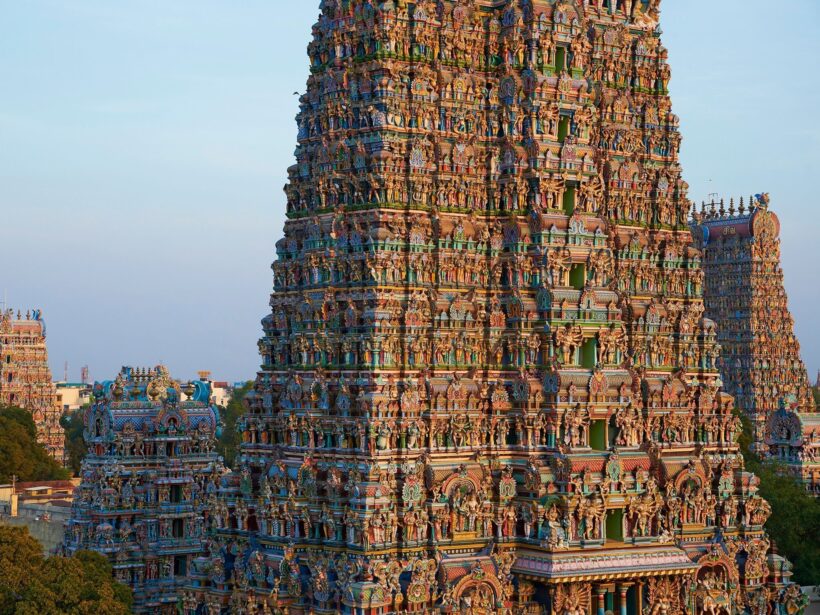
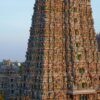
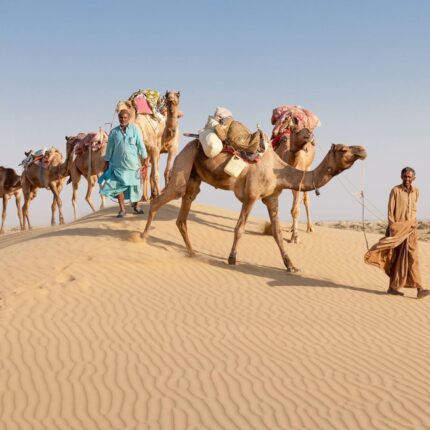
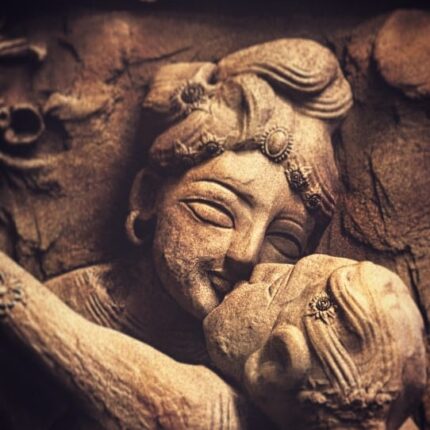
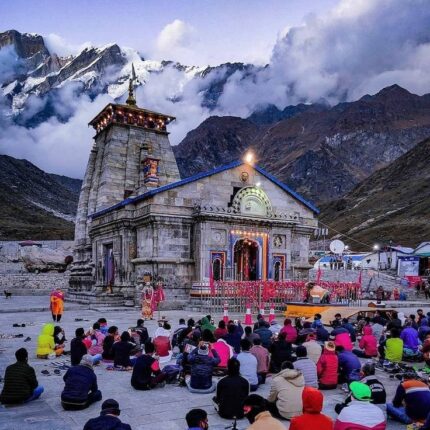
Reviews
There are no reviews yet.